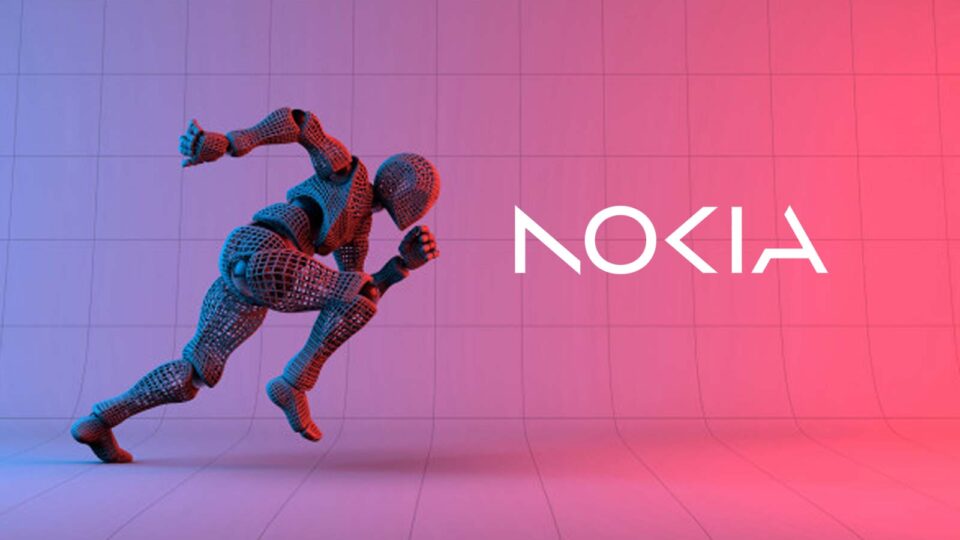Nokia announced the global launch of new products to further enhance its industry-leading AirScale baseband portfolio that combines ultra-high performance and capacity, with extreme energy efficiency. The solutions include two next-generation 5G-Advanced, baseband capacity cards named Levante and Lodos. Also announced is a new ultra-performance baseband control card, Ponente, with unprecedented throughput capacity. These new products are powered by the latest generation of Nokia’s ReefShark System-on-Chip (SoC) technology to enable industry-leading baseband cell capacity, connectivity, and processing. These baseband cards are optimized for 5G standalone architecture as part of Nokia’s modular and highly scalable AirScale baseband solution that supports long-term network evolution while ensuring investment protection. Nokia’s AirScale baseband is O-RAN compliant and will be deployed with Nokia’s own, as well as third-party, radio products. It will also be operated in future hybrid networks with Cloud RAN. Levante, Lodos, and Ponente will be trialed later this year, with commercial shipments beginning in the first half of 2024.
Introducing Levante and Lodos – Next-generation baseband capacity cards
Nokia introduces Levante, a 4G/5G capacity card that delivers ultra-performance. Levante doubles the number of supported Massive MIMO cells and yet reduces energy consumption by up to 60 percent. It also offers exponential scalability enabling up to three times larger site configurations. Nokia also adds Lodos to its baseband portfolio, a high-performance 4G/5G capacity card offering enhanced scalability and reduces energy consumption by up to 30 percent.
CIO INFLUENCE: World Password Day: Password advice for CIOs
Introducing Ponente – Ultra-performance baseband control card
Nokia has also launched Ponente, a 2G-5G control card for ultra-performance with extreme energy efficiency. It supports increased traffic growth with up to 100 percent higher throughput capacity offering high-speed site connectivity. Ponente also reduces energy consumption by up to 80 percent and provides future-proof site evolution to 5G Standalone and 5G-Advanced, as well as efficiency in spectrum refarming. The cards integrate Trusted Platform Module (TPM) technology, which uses hardware-processed security keys that are more secure than software-processed keys.
Introducing Pandion and Shikra – expansions to Nokia’s radio portfolio
Nokia further announced the expansion of its radio portfolio for O-RAN, Cloud RAN, and purpose-built scenarios with Pandion, Nokia’s latest generation of FDD remote radio heads, supporting up to three FDD bands in a single, optimized form factor. Nokia also announced Shikra, which complements Nokia’s comprehensive portfolio with leading-edge small cells for both outdoor and indoor scenarios.
CIO INFLUENCE: JFrog Software Supply Chain Platform Delivers 393% ROI According to Total Economic Impact Study
Introducing MantaRay – Nokia’s new network management and optimization solutions portfolio
Nokia has also announced the launch of MantaRay, which brings the power of Artificial Intelligence/Machine Learning (AI/ML) to support intelligent, efficient, and cognitive RAN operations. The MantaRay portfolio includes MantaRay Network Management, Nokia’s future platform for Purpose-built RAN, Cloud RAN, and Core Network management, which can scale from a single server for small enterprises to large-scale implementations; MantaRay SON (Self-Organizing Networks) with advanced AI and cognitive capabilities to lead the transformation of mobile networks; and MantaRay RIC (Nokia’s O-RAN compliant near real-time RAN Intelligent Controller), which has the potential to become a key enabler for RAN programmability. Nokia also launches MantaRay Energy, which combines Nokia’s capabilities to optimize the energy consumption of radio access networks with AI and ML.
Rémy Pascal, Principal Analyst, Mobile infrastructure at Omdia commented: “These new additions to Nokia’s modular AirScale baseband portfolio will help mobile operators manage traffic growth and future-proof their networks by adding capacity and performance where and when it is needed. Nokia has also significantly raised energy efficiency of the products thanks to new ReefShark baseband SoC and other hardware design improvements helping mobile operators to meet their sustainability commitments.”
Tommi Uitto, President of Mobile Networks at Nokia, said: “We are excited to introduce our enhanced portfolio of next-generation Radio Access Network solutions.Our new baseband delivers twice the performance with just half the energy, helping our customers meet their ESG targets.Enabling ultra-high capacity, our future-ready AirScale baseband portfolio helps manage exponential increases in traffic growth. With our MantaRay solutions portfolio, our customers can leverage the power of Artificial Intelligence in their mobile networks. All of these solutions are O-RAN ready, and Cloud RAN compatible, supporting the long-term network evolution to 5G-Advanced and beyond.”
CIO INFLUENCE: CIO Influence Interview with Pete Lilley, Vice President and GM at Instaclustr
[To share your insights with us, please write to sghosh@martechseries.com]


